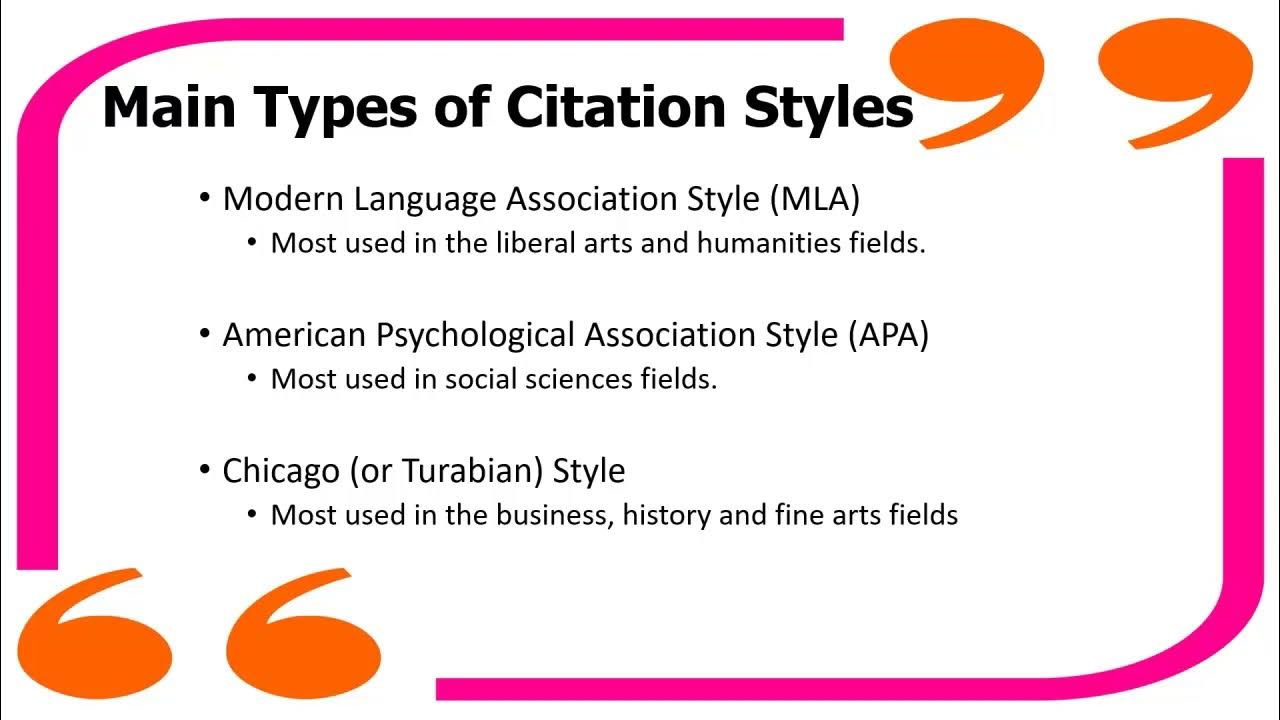How to Quote in Under 5 minutes | Scribbr 🎓
Summary
TLDRThis video provides a step-by-step guide on how to properly quote in academic writing, focusing on APA style. It covers key principles such as surrounding quotes with quotation marks, correctly citing the author, and ensuring the quote is identical to the original. The video explains how to introduce quotes, differentiate between short and long quotes, and modify quotes using ellipses or square brackets. It also advises on when and why to use quotes in writing, helping viewers strengthen their arguments with authority. By the end, viewers will be quoting with confidence.
Takeaways
- 😀 Quoting requires understanding three key principles: using quotation marks, citing the author, and keeping the quote identical to the original.
- 📝 Citation in APA style needs to include the author's name, the year, and the page number for books or journals.
- 🔍 Quotes must remain identical to the original, unless changes are made, in which case specific guidelines must be followed.
- 📖 Quotes shorter than 40 words need quotation marks and in-text citations; longer quotes (over 40 words) should be formatted as block quotes without quotation marks.
- ✏️ When shortening a quote, ellipses (dot dot dot) can be used to omit irrelevant parts.
- 🗣️ You can introduce quotes using full sentences followed by a colon, or a signal phrase followed by a comma.
- ✍️ Information can be added to a quote using square brackets to clarify missing details, such as replacing pronouns.
- 🔄 If a quote contains errors, you can highlight them by adding [sic] after the mistake to show it was in the original text.
- 📚 Quotes are useful for supporting arguments or analyzing language in writing, but they should be used thoughtfully.
- 💡 Quotes should support your points, critique opposing viewpoints, or elaborate on theories relevant to your topic.
Q & A
What are the three basic principles of quoting mentioned in the video?
-The three basic principles are: 1) The quote must be surrounded by quotation marks, 2) The author must be cited correctly, including the author's name, year, and the page number if it's from a book or journal, and 3) The quote must be identical to the original source.
How should you handle quotes that are longer than 40 words?
-For quotes longer than 40 words, instead of using quotation marks, the quote should be set on a new line and indented to form a separate block of text.
What is the purpose of using ellipses in a quote?
-Ellipses (the dot dot dot) are used to indicate that certain words, phrases, or sentences have been removed from the original quote, usually because they are irrelevant or unnecessary.
How can you introduce a quote with an introductory sentence?
-You can introduce a quote with a full sentence followed by a colon. This helps set up the context for the quote before presenting it.
What is the difference between using a colon and a comma when introducing a quote?
-A colon is used after a full introductory sentence, while a comma is used when introducing a quote with a signal phrase that mentions the author or source but doesn’t form a full sentence.
When should you use square brackets in a quote?
-Square brackets are used to add information to a quote that is necessary for understanding. For example, you might use them to clarify a pronoun or provide missing context.
What should you do if the quote contains a grammatical or spelling error?
-If the quote contains an error, you can indicate this by adding [sic] after the mistake. This shows that the error is part of the original text and not your own.
When is it appropriate to frequently use quotes in a paper?
-Frequent quoting is appropriate when analyzing a specific author’s language and style or when trying to convince readers of your argument by supporting it with authoritative quotes.
Why is it important to not overuse quotes in your writing?
-Overusing quotes can make it seem like you are relying too heavily on other sources instead of providing your own analysis. It's important to only use quotes when they add significant value to your argument.
What is the focus of the video in terms of citation style?
-The video focuses on the APA citation style, but viewers are encouraged to check other links if they are using different citation styles.
Outlines

هذا القسم متوفر فقط للمشتركين. يرجى الترقية للوصول إلى هذه الميزة.
قم بالترقية الآنMindmap

هذا القسم متوفر فقط للمشتركين. يرجى الترقية للوصول إلى هذه الميزة.
قم بالترقية الآنKeywords

هذا القسم متوفر فقط للمشتركين. يرجى الترقية للوصول إلى هذه الميزة.
قم بالترقية الآنHighlights

هذا القسم متوفر فقط للمشتركين. يرجى الترقية للوصول إلى هذه الميزة.
قم بالترقية الآنTranscripts

هذا القسم متوفر فقط للمشتركين. يرجى الترقية للوصول إلى هذه الميزة.
قم بالترقية الآنتصفح المزيد من مقاطع الفيديو ذات الصلة

How to format your paper in APA style in 2024

APA 7th Edition Format & Citations (Word) -- 2024

Citation Basics (MLA, APA & Chicago)

Rahasia Proposal Skripsi CEPAT ACC! 10 Menit Hunting Jurnal Ilmiah Terbaru (2025)

CÓMO HACER CITAS Y REFERENCIAS SEGÚN NORMAS APA 7ma. (SÉPTIMA) EDICIÓN

Cara Menulis Kutipan, Rujukan, atau Sitasi sesuai APA style 7th Edition
5.0 / 5 (0 votes)
